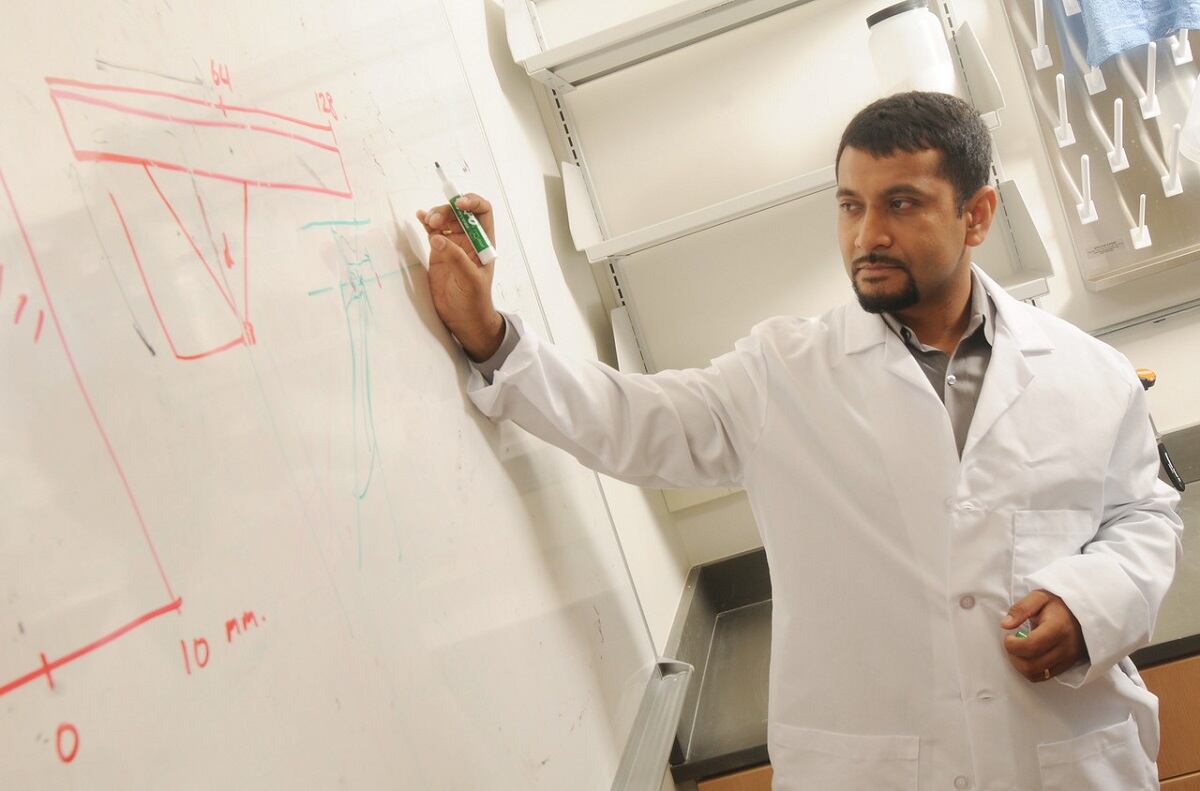New research may allow greater control of prosthetic limbs for those who need them.
Researchers at George Mason University in Virginia are studying the use of ultrasound technology to help people with prosthetic limbs use them more accurately.
The traditional method senses muscle activity using electrodes that pick up the electrical activity of muscles in the residual limb as the person works to move the prosthetic. The drawback with using electrodes is that they can’t differentiate between the signals from the muscles in the forearm that control the fingers.
“Because you’re sensing signals at the skin’s surface, you can’t differentiate readily from the muscles that are deep inside the tissue, or muscles that are overlying,” said Siddhartha Sikdar, an associate professor in GMU’s bioengineering department.
By using ultrasound waves, they can see deeper inside the tissue and can tell the difference between different muscle compartments, he told Army Times.
“This allows us to get much better information about what the amputee is attempting to do,” Sikdar said. “In our tests, we have shown we can do much more intuitive control using this method.”

Sikdar and several other GMU researchers are studying ultrasound technology through grants from the Defense Department and the National Science Foundation.
“Ultrasound provides a much more detailed representation of the underlying muscle activity,” said Michelle Harris-Love, an associate professor at GMU’s bioengineering department. “It can record muscle activity over a larger area and at greater depth.”
The team is working on miniaturized ultrasound transducers, which are worn as a small band on the forearm or under the prosthetic. The device sends sound waves into the tissue and receives them back. The signals are analyzed using computer algorithms to recognize muscle activity.
“[Computer algorithms then] interpret this data and try to decide which muscle the amputee is trying to control and what movement that corresponds to,” Sikdar said.
During testing, patients learn how to control a virtual hand using the ultrasound method. For example, a patient would imagine moving his or her index finger, and it would move.
“In the initial testing, amputees have the ultrasound device placed on their residual limb and are asked to contract their arm muscles as if they were performing a specific movement,” Harris-Love said.
The goal is that this approach could be used to control the signal for a prosthetic hand, as well.
“This would provide a much wider variety of possible movements that could be performed much more intuitively than is currently possible,” she said.
The current focus is on upper-body prosthetics, but Sikdar hopes they can eventually use this technology with lower-body prosthetics as well.
“We anticipate in the next five years or so we can probably develop a commercial project,” Sikdar said. “Working with amputees and seeing their current limitations and how we can improve their function is really motivating.”
Charlsy is a Reporter and Engagement Manager for Military Times. Email her at cpanzino@militarytimes.com.





